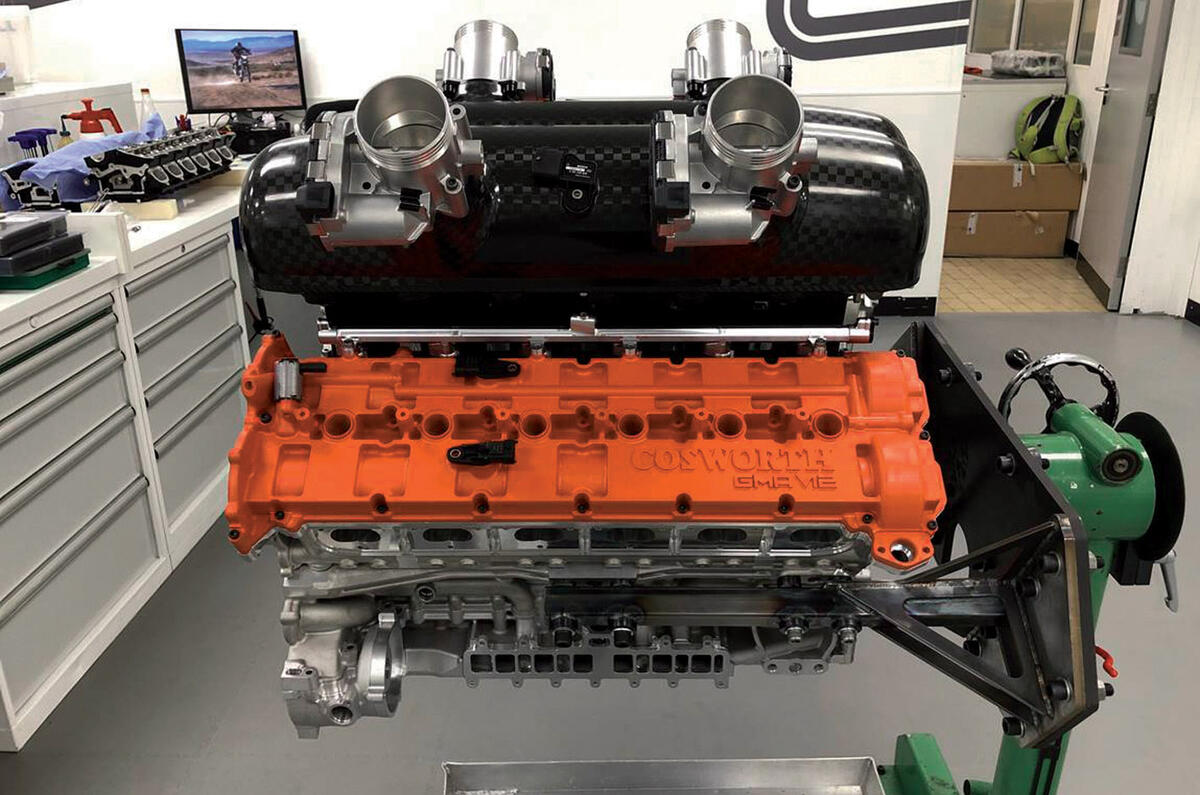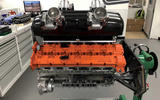The all-new, ultra-lightweight 3.9-litre V12 engine that will power Gordon Murray’s new T50 supercar reaches a crucial milestone this week: running for the first time in production form on the dynamometers of its Northampton developer, Cosworth Engineering.
The engine, billed by its creators as “the greatest road car V12 ever made”, is claimed to be the lightest-ever V12 (180kg), with both the highest rev limit (12,100rpm) and the highest power density (166bhp per litre).
UPDATED: The 650bhp T50 has now been fully revealed
Tests have been proceeding for the past nine months on three-cylinder 12-valve prototypes as proving beds for the new engine’s aluminium pistons, titanium valves and conrods, gear-driven cam drive and crank-driven, 48V starter-generator. The last of these removes any need for a conventional belt-driven alternator. Work is now starting in earnest on refining the V12 as a complete unit.

Gordon Murray Automotive (GMA) testing has already indicated that the engine meets emissions targets and exceeds its estimated power and torque outputs. This has led Murray to lift the official peak power output from the originally quoted 641bhp at 11,500rpm to 663bhp.
Why choose a normally aspirated V12 in what is now a turbo era for high-performance cars? “I knew a turbo could never deliver the throttle response the McLaren F1 was famous for,” said F1 creator Murray, “and neither would we get that wonderful F1 induction growl. That car felt so great because its throttle response rate was 10,000rpm per second – but our new engine responds nearly three times faster still.”
The T50 – a three-seat carbon-chassis design utilising the ‘fan car’ technology that Murray originally conceived for Brabham grand prix cars of the late 1970s – will be even lighter, faster and more package efficient than the F1. However, the T50 depends greatly on the lightness, low mounting and compactness of the V12 to achieve its amazingly light all-up weight of 980kg.
















Join the debate
Add your comment
XXXX is so daft at times
"Why didn't he build a V10 or a V16 instead?"
and that is the daftest question in a long time.
I'm sure you can get Mr Murrays work address to write your words of wisdom on the matter to him. If you can find your crayolas.
:p
Draftest misquote ever, dont take things out of context it only makes you look stupid CENIJMU.
Holy Cow!
Yes, the absolute pinancle. Unlikely to ever be surpassed.
It won't ever be built
When did he last design a car that actually made it into production?